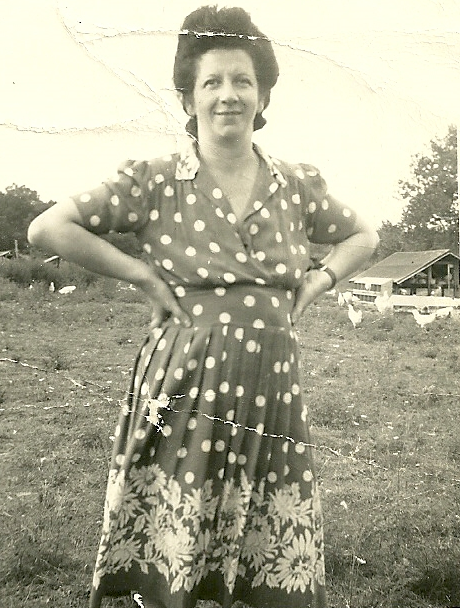 |
|
| Contents | |
| Farming Communities of NJ Homepage |
|
| Alliance, Norma & Brotmanville |
|
| Woodbine | |
| Rosenhayn and Carmel | |
| Roosevelt |
|
| Farmingdale |
|
| After World War II | |
| Synagogues
of Other Farming Communities |
|
| In the News | |
| Resources | |
| Memories | |
| Photos | |
| JewishGen
Home Page |
|
| KehilaLinks Home Page |
|
|
| Around the First World War, Jews started settling in loose knit groups on farms in south central New Jersey. Some of the bigger Jewish farming communities were in Tom's River, Farmingdale and Lakewood. Primarily a poultry center, it was comprised of independent farmers united through economic cooperation such as cooperative purchasing. Its Jewish farmers came in four waves:
Farmingdale, in Monmouth County, six miles from Fort Monmouth, is a study in how Jews could live the dream of achieving spiritual development by working the soil to become the egg capital of the United States in the 1940ís. Begun in 1919, immigrants from Galicia, and the tenements of New York City, the Farmingdale community was initiated by the Jewish Agricultural Society. Initially, it grew produce (potatoes and corn), then animals (pigs and cows). When the Jewish Agricultural Society saw that this community needed a different product, it suggested poultry. Supported by the Jewish Agricultural Society, Farmingdale struck it rich over a period in the poultry and egg business. A general organization of an Egg Cooperative that included the corridor of egg farmers in the Route 130 corridor was formed. The coop members shared farming knowledge, marketed eggs and poultry and kept up on the latest in the industry. They built a Community Center,
with the help of Jewish Agricultural Society
around which they centered their lives, culture
and cooperative venture meetings. The initial population and later waves of immigrants did not practice most Jewish rituals or prayer. Nevertheless, their social lives centered on the Jewish holidays, the rites of passage and the never-ending discussion of issues probably derived from Talmud study of their forbears. The community formed a committee of Arbitrators (or Bet Din) to settle disputes that consisted of a judge chosen by each party and the chosen judges selected a third neutral judge.Mallow Farm photos - Farmingdale, NJ
Rutgers University Library has a collecton on Farmingdale (1890-1995) Lakewood, is a township in Ocean County When Lakewood's half-century heyday as a resort destination ended in the 1920s, the Jewish chicken farmers began to arrive. Fresh from the Eastern Europe, they came to work the land because proving themselves economically self-sufficient was part of their commitment to throwing off centuries of oppression. They were different from their neighbors with Yiddish as their language, often an agnostic culture and socialism as their faith. They attracted the antagonism and anti-semitism. A generation after the chicken farmers ap≠peared, there materialized in Lakewood an even less likely newcomer, an ultra-Orthodox rabbi named Aharon Kotler. Until the German invasion of Poland in 1939, he had served as the rosh yeshiva [head of a school of advanced Jewish learning] of the renowned religious aca≠demy in Slutzk, and his journey to America had traced a furtive refugee's path to Vilna, then Siberia, then Shanghai, then San Francisco, then New York, and finally to a backwater in southern Jersey, where the prevailing style of Jewishness was anathema to all Rabbi Kotler embodied. Undeterred, he went ahead and in 1943 established a classical yeshiva for 15 stu≠dents. Over the decades to come, it grew 50 times as large. Today Lakewood is one of the hubs of Orthodox Judaism and is home to one of the largest yeshivas in the world. Toms River is located about fifty miles northeast of the Vineland colonies and ten miles from Lakewood in Ocean County. Jewish farmers were guided to the Toms River area by the Jewish Agricultural Society following World War I. JAS provided many of the farmers with loans, but the farmers also invested their savings. With the depression that followed World War I, many out of work city dwellers found the opportunity of farming in a community that was newer than Woodbine and the Vineland areas attractive. By the mid-1920's about sixty families had formed the Toms River Community of Jewish Farmers. The community supported the Sholem Areichem Folk School, housed in the Community Hall, which taught the mahme loshen (mother tongue), Yiddish. Additionally, there was the Hebrew School of Congregation B'nai Israel. The community, under the leadership of Aaron Pincus who was a graduate of the Woodbine Agricultural School, had an ongoing correspondence with the colonists of Freileben (Free Life) in the "autonomous" Jewish region of Soviet Siberia. Feeling a sense of responsibility for their fellow colonists abroad, Toms River provided aid for Palenstine Yishuv and collections for the Joint Distribution Committee. The National Labor Committee and Poale Zion (Labor Zionists) were active in the community The Toms River community prospered and grew to 360 families including refugees from the 1930's and of World War II. The story of First Jewish Family of Toms River is found on the site of the National Museum of American Jewish History. A Reform synagogue occupies what was once a Jewish community center for the local farmers, many of whom were socialists who would have scorned the formal establishment of a synagogue in their days. Jewish
Heritage Museum of Monmouth County
|
|||||



